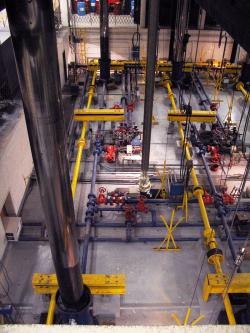For 12 million years it trickled, meandered, and snaked, before bursting violently loose to slash to its final destination. Then, one winter day in 1935, this ancient, tempestuous journey abruptly ended in a remote canyon as the last of more than 5 million buckets of concrete was poured onto the crest of a 726-foot wall that blocked its path. Observers watched in awe as the nation’s wildest river puddled up behind the massive structure. Soon the benign-looking pond would reach back for 115 miles to a depth of 500 feet, the largest human-made lake in the world.
1930s

The precision "choreographed" staging of Radio City Music Hall offers size and versatility, unlike any other. Built in 1932 by Peter Clark, its innovative elevator system is a forerunner of other stage designs (including the Metropolitan Opera House) as well as aircraft carrier systems built in World War II. These elevators can handle people, animals, props and scenery at variable speeds, delivering them to the stage or above and also dropping out of sight in front to reappear again in the back, just as effectively.
YearAdded:
Image Credit: Public Domain (Author's Choice)Image Caption: Underneath the Orchestra Lift at the Radio City Music Hall
2001


